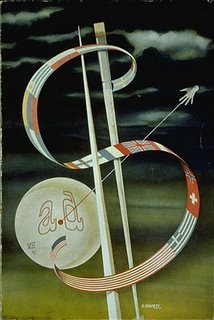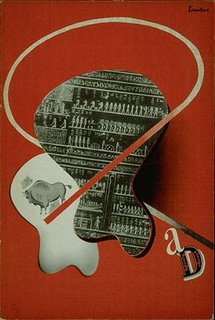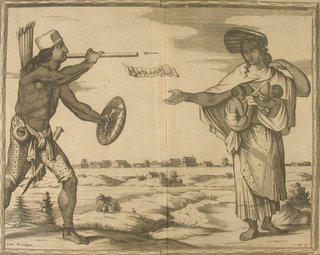





L’Écuyer Français qui Enseigne à Monter à Cheval et à Voltiger by L. Imbotti de Beaumont in 1679 [again, at the Danish Veterinary and Agricultural Library] is apparently one of the first texts to outline the methods of trick riding (link updated Sept 2013). Imbotti drew his inspiration from William Cavendish, Duke of Newcastle.
{Perhaps they were practising for a race?}
[Reminiscent of de Moulin]
Saturday, January 28, 2006
Static Horsemanship
Insect Images from Rare Books





 There is a display of ~50 images from rare 17th and 18th century insect books by Jan Swammerdam, Francesco Redi, Augustus Iohannes Roesel von Rosenhof, J.C. Schaeffer and C.G. Jablonsky at the Danish Veterinary and Agricultural Library.
There is a display of ~50 images from rare 17th and 18th century insect books by Jan Swammerdam, Francesco Redi, Augustus Iohannes Roesel von Rosenhof, J.C. Schaeffer and C.G. Jablonsky at the Danish Veterinary and Agricultural Library. Also, definitely check out the links from this page - a large serving of natural history of the rare book variety.
Also, definitely check out the links from this page - a large serving of natural history of the rare book variety.
Excellent resource.
The People of the World in 1723
Pieter van der Aa was a prolific publisher and very well known for his maps. They weren't originals but they had the reputation for being very decorative. [some examples]
In 1723 he published a 27 volume series called La Galerie Agréable du Monde which is said to have a huge number of engraved maps and illustrations. The plates were engraved by about 25 artists - principal being Aldert Meyer. It would appear that the material in this set was also copied, Meyer having illustrated a costume book in ~1700. That's all the information I could find on the internet.
The International Institute for Economic History have 23 plates from La Galerie Agréable du Monde.
Friday, January 27, 2006
French Miscellanea
 The above 2 sketches are by Paul Eugène Mesplès
The above 2 sketches are by Paul Eugène Mesplèsfor a 1926 publication: la Pipe Cassée de Vadé.
Jean Joseph Vadé wrote a 4 song Parisian poem
(la Pipe Cassée) in the 18th century
['poème épi-tragi-poissardi-héroïcomique'].
 From the 17th century Livre de portraiture d'Annibal Carrache.
From the 17th century Livre de portraiture d'Annibal Carrache.[doctored detail]
Update: Annibale Carrachi (Italian artist)
All these illustrations come from La bibliothèque électronique de Lisieux - there are quite a few images from rare publications linked from that gallery page.
[via the wonderful Netlex News website]
Modern Media





Although it is a (very subtle) commercial site, Modernism101 has a selection of rare magazine, book and to a lesser extent, poster images available. It essentially caters to the industrial and architectural design, tyophilic, modernist (duh) magazine and bookart types and has worthwhile commentary about each exhibit.
Dr Leslie & the Composing Room - a fascinating thesis (lots of visual goodies) by Erin K Malone about a leading New York promoter of graphic design in the 1930s/1940s.
Thursday, January 26, 2006
Glover's Atlas







 Thomas Albert Glover (more usually known as Tomisaburo Kuraba) was the son of a Scottish industrial entrepeneur in Japan, Thomas Blake Glover. Kuraba collected some 800 ocean specimens which were painted and catalogued by 5 artists in Nagasaki between 1912 and 1936 and bound into 32 volumes.
Thomas Albert Glover (more usually known as Tomisaburo Kuraba) was the son of a Scottish industrial entrepeneur in Japan, Thomas Blake Glover. Kuraba collected some 800 ocean specimens which were painted and catalogued by 5 artists in Nagasaki between 1912 and 1936 and bound into 32 volumes.
2 incidental pieces of trivia: Kuraba's step-mother was the inspiration for Puccini's Madame Butterfly; and Kuraba committed suicide following the bombing of Hiroshima and Nagasaki at the end of WWII.
Glover's Atlas is on display at Nagasaki University. Despite no english it's easily navigable from multiple access symbols.
Fish Nagasaki have a smaller database with larger images, but it's an old site and I couldn't get any of the specimens to completely load.
I mentioned the atlas in passing previously - the links in that post lead to a wealth of Japanese natural history material.
[I cleaned up some background artifact in some of these - as a set, there is a lot of deterioration evident]
Dutch Voyage to Brazil, Guinea and Argentina







The author of this 1617 book obviously didn't get the memo explaining the difference between 'abstract' and 'title'.
"Journal or daily register of the voyage to Rio de Plata, done with the ship named Silveren Werelt, which under the command of Captain Laurens Bicker, and the direction of the financial officer Cornelis van Heems-kerck, visited the coast of Guinea, where the captain went missing, and sailed alone further to Rio de Plata, where having come up this river to the 60th mile, at Bonas Aeris, had to leave behind the financial officer (who was deceived by the false friendliness of the governor of this same place and went on land to be able to work freely) and 8 other persons, and from there sailed away, and because of terrible conditions almost all the crew died, and in the bay Todos los Santes the rest fell into the hands of the Portuguese, described to serve as a mirror and example for all sea-faring people. / By the master of the ship who was there Hendrick Ottsen" at the Library of Congress. No need to read it really. The above images are the sum total of engravings in this 53 page book.
Wednesday, January 25, 2006
Educating the World with Pictures
...gold and silver are fleeting and transitory;
children an immortal inheritance."
 Ludus Alea ('Dice-Play')
Ludus Alea ('Dice-Play')"...We play at Chesse on a Chesse-board, where only art beareth the way.
The most ingenious Game is the game at Chess, wherein as it were
two Armies fight together in Battell."
 Præstigæ ('Sleights')
Præstigæ ('Sleights')"The Tumbler maketh several Showes, by the nimblenesse of his body,
walking to and fro on his hands, leaping thorow a Hoop &c..."
 Ludus Pilae ('Tennis-Play')
Ludus Pilae ('Tennis-Play')"In a Tennis-Court, they play with a Ball which one throweth,
and another taketh, & sendeth it back with a racket;
and that is the sport of Noble-men to stir their body."
"Malefactors are brought from the Prison (where they are ?not to be tortured) by Sergeants, or dragd with a horse to place of Execution. Theeves are hanged by the Hangman, on a gallows; Whore-masters are beheaded. Murtherers and Robbers are either laid upon a Wheel having their legs broken or fattned upo a stake. Witches are burnt in a great Fire. Some before they are executed have their tongues cut out, or have their Hand cut off upon a Block, or are burnt with Pincers. They that have their life given them, are set on the Pillory, are strapadoed, are set upon a wooden horse, have their ears cut off, are whipped, are branded, are banished, are condemned to the galleys..Traytors are pulled in pieces with 4 horses."

Jan Amos Comenius (Czech: Komenský) (1592-1670) is regarded in many quarters as the founding father of modern education and published over 150 books, most dealing with the philosophy of education.
As a Protestant Bishop, Comenius was at risk from the counter-Reformation and after living as a fugitive in his homeland of Moravia for 7 years, he escaped in 1628 and lived the remainder of his life in a number of countries across Europe. He was to acquire fame for advocating universal education (including women) with the vernacular language rather than latin and emphasizing a relationship of the senses with everyday objects in the environment rather than by rote learning. He believed that schools should be pleasant places with sympathetic teachers.
The basic tenet of his teachings has been called pansophism, or 'all knowledge', in which his didactic instructional books sought to marry philosophy, theology and education. This was a voice for reason in conjunction with the stirrings of the Age of Enlightenment, but the principles of education were still secondary to the central role of religion. Comenius's standing in the education world was esteemed and he was asked to be the first president of Harvard University - he turned them down.
The images here come from a reprint of a 1658 publication for children called Orbis Sensualium Pictus ('The Visible World in Pictures'). This was a landmark publication, originally issued in german/latin but was soon followed by numerous translations with multilanguage formats. It attempted to present the known world systematically and was the first instructional book aimed at children to use pictures. The numbers in each image are referenced in the accompanying text. The first english translation was by Charles Hoole in 1659. It was so popular that there were well over 100 editions released by the middle of the 18th century.
It is somewhat ironic that a groundbreaking educational tome of imagery should be somewhat poorly represented online - the images are all small format, in other words. Nonetheless, I learned me some latin today.
- The woodcuts (of which there are about 150 in total) here from the 1659 english edition of Orbis Sensualium Pictus were snagged from the Spanish Universidad Nacional de Educación a Distancia - Manuales Escolares portal site and are probably the best quality around.
- A pure latin set of images.
- Russian/latin version (abbreviated).
- Jan Comenius biography: I, II.
- The 17th Century and Education - lecture notes from the University of Minnesota.
- The logical application of technology to Orbis Sensualium Pictus - from the Imaginary Museum.
- Update: another version (1698) from Nuremberg.

































































